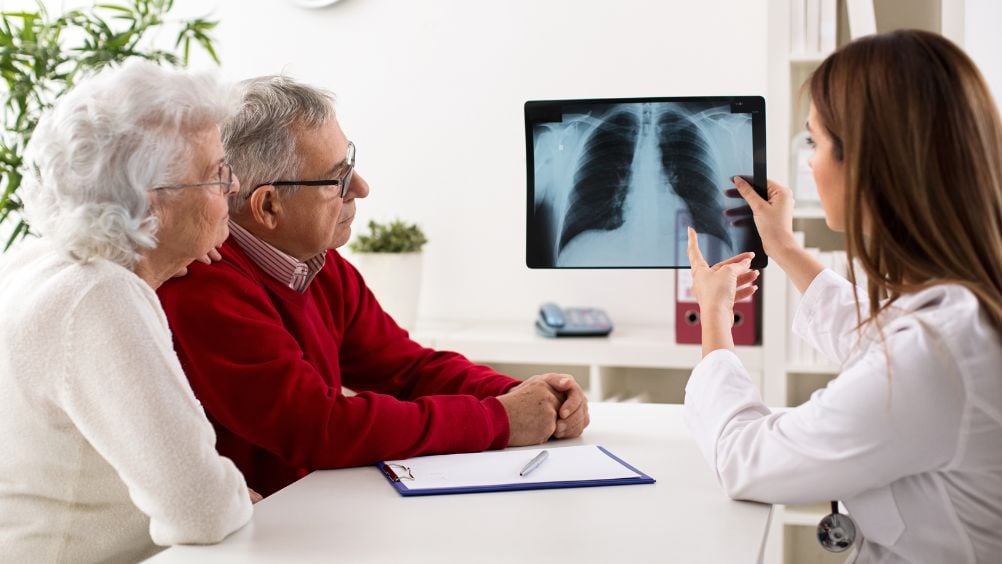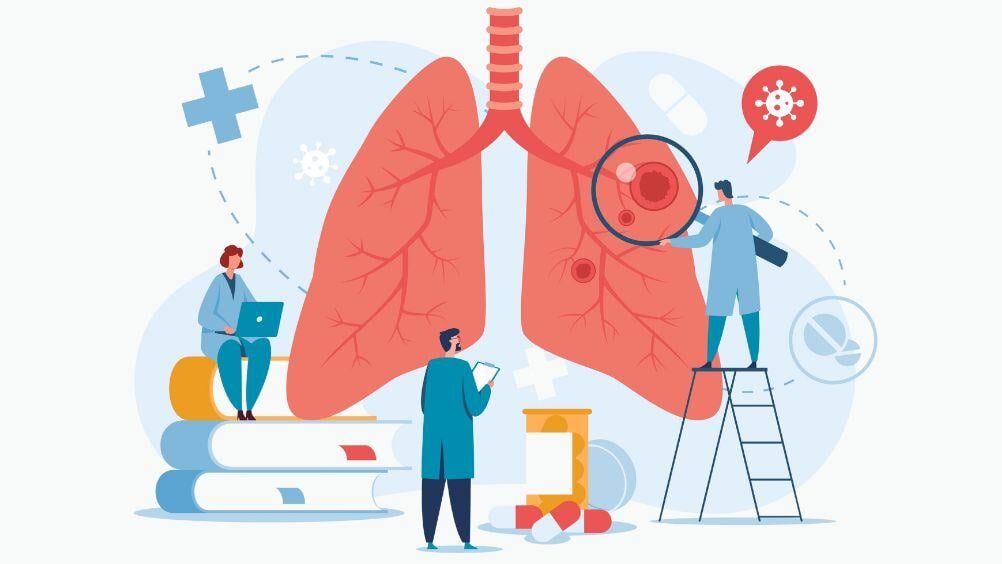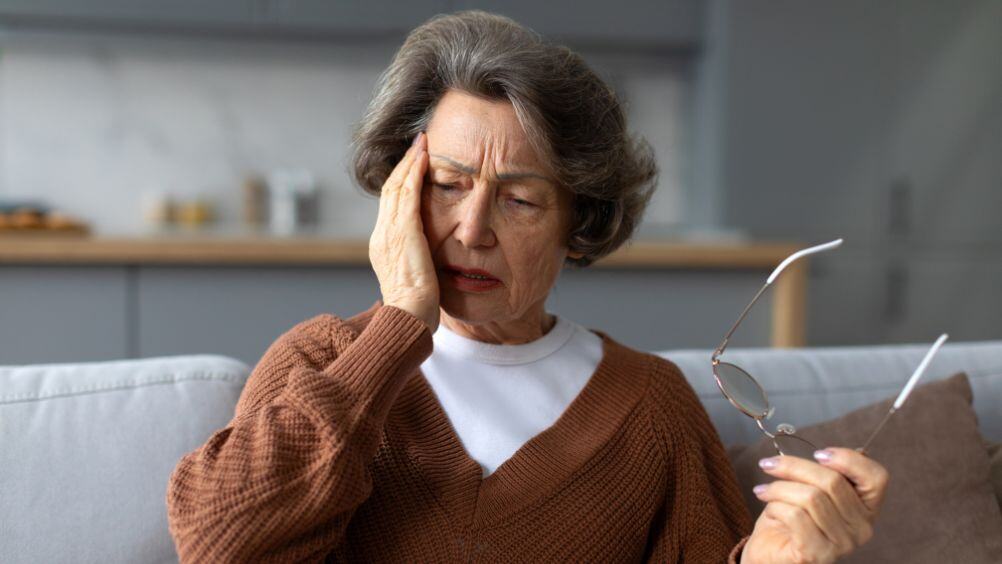Hearing that you have a nodule in your lung can be concerning, and you may ask, "Does that mean I have lung cancer?" It's important to understand that most lung nodules are not cancerous (also called benign). Often, treatment isn’t necessary. Here is some information to help you better understand what nodules are and what to expect if one or more were detected after having a chest X-ray or CT scan.
About Lung Nodules and Their Causes
A pulmonary nodule, commonly known as a lung nodule, is an abnormal cluster of cells found within the lung tissue. Nodules often emerge after an infection and are relatively common, showing up in chest scans in nearly half of adult patients undergoing imaging for other medical reasons.
Over time, these cell clusters become calcified, making them easier to see on chest imaging tests. Typically, nodules appear as a white spot on the X-ray and may be referred to as a “shadow” by the doctor. Cases vary, with some patients having a single nodule and others multiple, ranging in size from as small as 3 mm to over 25 mm in diameter. Nodules under 9 mm are generally considered small.
In addition to prior infections, persistent exposure to airborne irritants and certain autoimmune diseases like sarcoidosis and rheumatoid arthritis can also cause lung nodules to develop.
While nearly all nodules are benign, there are times when they can be an early sign of lung cancer. Examining the nodule(s) more closely with additional diagnostic tests and procedures may be needed.
High-Risk Patients Can Benefit from Lung Cancer Screening
In addition to being the leading cause of lung cancer, smoking can also increase the risk of lung nodules due to its irritant properties. Specific individuals who meet the following criteria may have their lungs screened with a low-dose CT scan:
- You must fall within the 50 to 80 age range, AND
- Have a history of “20 pack-year” smoking, AND
- Currently smoke or have quit within the last 15 years
The CDC defines a “pack-year” as consuming one pack of cigarettes each day for a year. Ten pack years could be from smoking a pack a day for 10 years or smoking two packs a day for five years. If you smoke, consider kicking the habit to help reduce your risk of both lung nodules and lung cancer.
Your doctor will review the imaging results to identify any areas that may need further observation or even biopsied to check for the presence of lung cancer. Health insurance plans, including Medicare, generally provide coverage for lung cancer screening for individuals who meet the criteria.
How Do Doctors Verify Whether a Nodule Is Cancerous?
While most lung nodules are benign, with approximately 95% not being harmful, your physician has several methods to determine if a detected pulmonary nodule is cancer. To do this, they will likely:
- Evaluate your lung cancer risk, considering factors such as family history, age over 50, smoking habits, and nodule size.
- Review imaging studies and possibly order additional scans. Small nodules may be monitored over time, whereas larger ones might require further imaging, like CT or PET scans, to rule out cancer.
- Consider a biopsy for a definitive diagnosis. Tests may indicate cancer, but a biopsy is the only method that can officially confirm it. Nodules 9 mm and larger typically undergo a biopsy to obtain tissue samples for analysis.
After a biopsy, a pathologist examines the sample for cancer, infection, scarring, or other issues. A cancer diagnosis will lead to more tests to identify the cancer type.
When Does a Lung Nodule Require Treatment?
Small, noncancerous lung nodules typically don’t need intervention and can be monitored safely with screenings. These nodules don’t usually interfere with respiratory functions or cause other symptoms. Sometimes, however, a nodule can grow, putting pressure on the airway, leading to coughing, wheezing, difficulty breathing, or respiratory infections. It’s very important to consult your physician if you have a lung nodule being monitored and you:
- Notice a change in your cough or cough up blood
- Have a new shortness of breath, chest discomfort, fever, or chills
- Lose a significant amount of weight without trying
- Would like additional information regarding your nodule and options
Keep in mind that the appearance of lung cancer symptoms does not necessarily mean your nodule is cancer. Regardless, it is best to be examined by your doctor to determine what kind of treatment, if any, is needed.
My Lung Nodule Is Cancerous: What Happens Now?
If your biopsy results determine that your lung nodule is cancerous, your physician can discuss what comes next. Usually, this involves consulting with an oncologist who specializes in lung cancer. If caught early, it may be effectively treated with surgery and/or radiation therapy. Targeted therapy and chemotherapy are other effective lung cancer treatments that may also be part of a treatment plan. The time spent monitoring your nodule should not affect your chances of effective treatment.
Related Reading: How is Radiation Therapy Used to Treat Lung Cancer?
Lung Cancer Care in the Willamette Valley
If you were recently diagnosed with lung cancer, know that there are treatment options available in the Willamette Valley. We encourage you to schedule a consultation with our lung cancer experts. Our team is prepared to discuss your condition and the tailored treatment possibilities available to you. Additionally, we offer second opinions to ensure you are confident in your diagnosis and treatment plan. Our cancer centers are located throughout the Willamette Valley, including Albany, Corvallis, Eugene, Lincoln City, Newport, and Florence.


